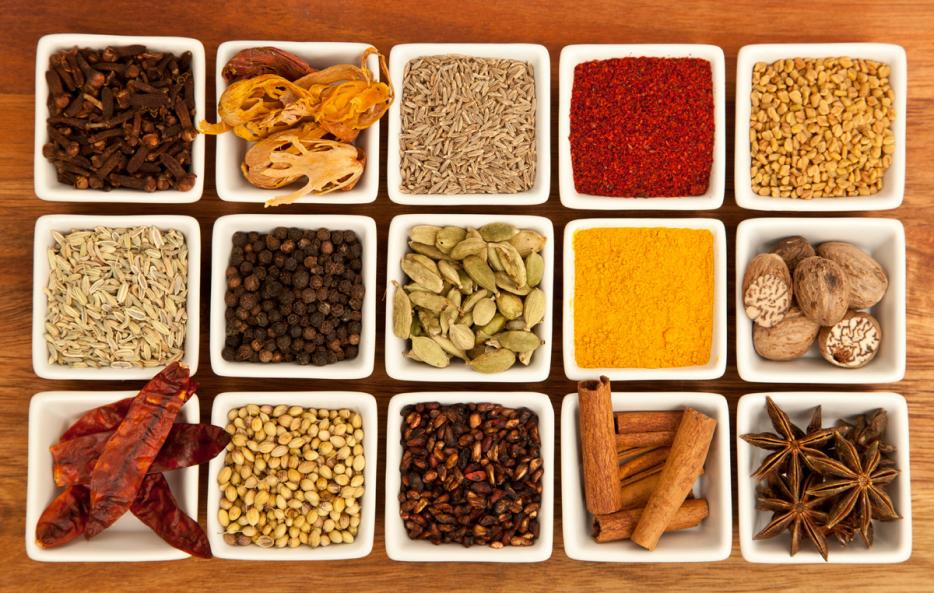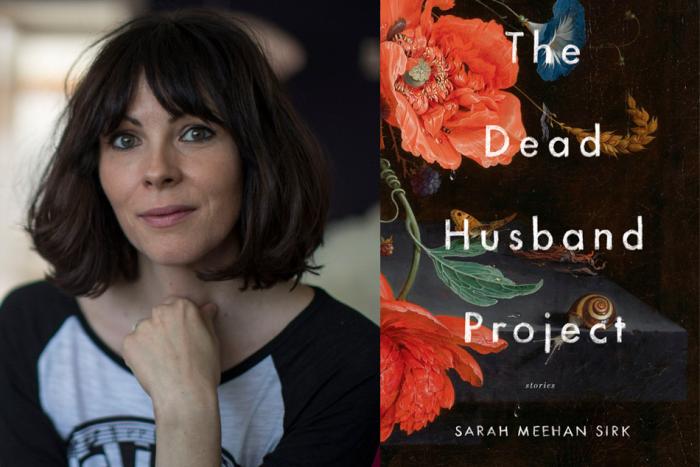The entire category of food writing comes with built-in nostalgia. It resurrects remembered meals. M. F. K. Fisher’s rapturous descriptions of eating in France, for example, are also the story of an adventurous American woman abroad, writing and living in quaint circumstances with a husband or between marriages. Fisher’s adventurous trip to isolated restaurants in Burgundy, where she’s served pickled herring that is “mild, pungent, meaty as fresh nuts,” and trout served au bleu, gutted and cooked half-alive in bouillon, “agonizingly curled on a platter,” is as much about the sense of being alone and given a unique gift in a foreign land, as it is about the food, which Fisher actually describes in rather quick little clauses compared to the considerable time given to her own sensations of hunger, surfeit, determination, and even fear in the face of an epic meal. Food writing, at least outside of the confines of the newspaper restaurant review, is also memoir.
When a food writer is associated with a certain ethnic background, that written act of nostalgia is positioned as a cultural looking-back. One of the conventions of diasporic food writing dictates that the writer’s identity and self-discovery are implicitly linked to a tracing of culinary roots, a finding-out of who he or she really is in the rich smell of a Keralan masala finally nailed. That’s the extra dimension to writing about ethnic foods: beyond meditating on hunger and fulfillment, writing about the real food of one’s ancestors becomes a meditation on personal and familial identity, and its relationship to the place where one grew up, or was wrested away from. The inability of the writer to reproduce his or her mother’s aloo gobi often becomes, as if by default, a metaphor for the impossibility of full communication between generations—a metaphor so overwrought it’s now as codified and recognizable as a Noh mask.
Curry’s range of definitions, edible and otherwise, prevent it from having a stable existence. It’s a leaf, it’s a process, it’s a certain kind of gravy with uncertain ingredients surrounding a starring meat or vegetable. It’s an elevating crust baked around previously bland foodstuffs, but it’s also an Indian fairy tale composed by cooks, Indians, émigrés, colonists, eaters, readers, and writers. The unifying notion of curry as an authentic, homeland-defining collection of dishes that form a cultural touchstone for diasporic brown folks is a cliché, in the same way food-based bonds between people from any culture who find themselves in a new land is a cliché. But curry can’t be trapped. If you push through the cliché, you arrive at a surprising truth: the history of this ever-inauthentic mass of dishes is a close parallel to the formation of South Asian diasporic identity, which is as much of a blend of conflicting cultural messages forced into coherence as Indian cuisine itself.
*
In “The Long Way Home,” a 2004 essay for the New Yorker, Pulitzer Prize–winning Indian-American novelist Jhumpa Lahiri connects family, roots, secrets, and the lost unknowables of the past incarnated in particular delicious dishes. Lahiri’s mother had learned to cook by witnessing and participating in her own mother’s cooking in Calcutta, learning lessons that she carried to America by, for example, getting “down on the floor to pound turmeric or chilies on a massive grinding stone.” Lahiri’s mother joins a line of mothers in this food-writing tradition. Like so many before her, she’s kindly evasive when asked to share recipes, and never records or verbally details them: “To this day, if friends ask how she made a particular dish, she cryptically replies, ‘It’s nothing, really, you simply take all the ingredients and put them in the pot.”’ This reluctance to share methods is perhaps true of many mothers, and extremely common in these nostalgic essays and stories. My mother, thankfully, will give up any recipe, with detailed directions. Lahiri ends up learning her Indian-cooking techniques from a cookbook by Madhur Jaffrey, doyenne of subcontinental cookery books and TV since the early 1970s. In the end, her mother is quietly impressed, taking a photo of the spread that Lahiri and her sister make for their parents’ thirtieth anniversary.
In 2016, Scaachi Koul wrote about learning how to cook the dishes of her childhood as an adult in Buzzfeed:
My mom had watched my grandmother cook for years, knew her languages, knew how to pleat a sari or mutter a Kashmiri insult (‘Thrat’) or throw a wedding for her son, 25 years after she moved away. I don’t have any of these secrets, because I was born in North America and raised around white people in a family that wanted to integrate. So it felt important to at least try to remember how my own mom did things.
Late last week, I called my mom to get a refresher on a few of her recipes. I wanted to make rogan josh, aloo gobi (potatoes and cauliflower), chicken biryani (chicken and rice), and paneer with palak (spinach). But my mom, like so many Indian mothers I know, has always avoided giving me complete recipes.
Mothers are an important and authentic part of the curry genre, both cooked and written: not only a source of accessible, cross-cultural nostalgia, but a reminder that there are domestic, comforting aspects to exoticism. The parental link to the homeland, especially for writers with immigrant parents who themselves were born in the West, or who moved to the West at such a young age that their grasp on the old country is delicate, questioned by brown people who dismiss their experiences or white people who say, “But you seem so white,” can also have a sinister, minimizing aspect.
Mothers are permitted to be mysterious or generous in this system of symbolism, but in Lahiri’s essay, her mother’s pattern of selective withholding becomes her primary trait: and Lahiri, the writer, is burdened with mastering the domestic skill of cooking in order to achieve an understanding and connection with her mother. In Koul’s piece, being able to cook her mother’s food comes to stand in for her mother’s presence: Koul manages to pull off cooking a solid meal, catching the intangible scents of her mother’s kitchen while she prepares it, but the meal “wasn’t as good because my food, as surprisingly palatable as it was, didn’t include my mom hovering over me with a wooden spoon.” For these writers, their personal relationships with their mothers overwhelm the symbolic stand-in of mother for motherland, of food and the ability to prepare it properly as a marker of authenticity: but for many readers, the mother on the page remains a symbolic stand-in for authenticity lost, despite the writer’s labour to own the metaphor, to make it personal.
That this treatment of a relationship between food, family bonds, and a fraying connection to the homeland appears frequently in essays and novels by diasporic South Asians doesn’t invalidate it. An oft repeated story isn’t a false one: experiences like the ones described by Koul and Lahiri take place in the kitchens of brown undergraduates worldwide. Their essays hit many of the same points about authenticity, love, and the unknowability of one’s parents, but stylistically they are distinct to their authors, and there is no sense that the details are anything but true, lived experience.
I’ve had a bunch of those experiences, too. A recipe is given over the phone, but a half pound of burnt onions and candied-walnuts-subbing-for-almond-slivers later, there’s a stovetop of muck that has nothing to do with home, comfort, or good food. Just failure, distance, a sense that something essential has been lost. This is authentic, isn’t it? It’s also relatable, to readers from any number of immigrant backgrounds.
Stories beget similar stories, and they don’t become lies as a result. But endless encounters with one narrative—one that tells us that truth and colonialism are embedded in these family recipes and our failures to cook them—make me wonder why I keep reading this particular story over and over again. South Asian food came to major prominence in the West with the explosion of Indian restaurants in the U.K., and the formative wave of South Asian diasporic writers followed soon afterward. When genres and forms have been around for long enough, there comes a point when they risk calcifying. This narrative thread, this way of thinking about curry, is one iteration of what Chimamanda Ngozi Adichie recently called “the single story,” one overarching narrative that “creates stereotypes, and the problem with stereotypes is not that they are untrue, but that they are incomplete. They make one story become the only story.”
*
When I first moved out of the house and my mother realized the depths of my incompetence as a cook, she pinned a sheet of paper to the kitchen wall of my apartment (not with a pin, but with a toothpick, running the paper through and affixing it to a pre-existing gouge in the drywall) with recipes for the BASIC MAURITIAN and BASIC INDIAN bases of any number of dishes, featuring onions, garlic, a more-or-less identical meld of spices, and in MAURITIAN’s case, ginger. Ginger is almost omnipresent in Indian food, but I’m still surprised for a half second when I run into it in a recipe from Madras or Chennai, due to this piece of paper that is still toothpicked to my brain.
In memories and stories, the diasporic household often becomes a stand-in for the land of origin, a circumscribed set of walls that bound in language, scents, tastes, ethical codes, and patterns of love and communication that start to shimmer and vanish if the front door is left open too long. It’s a backdrop to the stories, one encountered so often that I distrust my own household recollections sometimes, as though one of Chitra Banerjee Divakaruni’s short stories or a Sri Lankan pal’s childhood anecdote has supplanted my memory. But the paper my mother pinned up wasn’t a signet of the unreachable past: it was a set of dumbed-down instructions for a boy who had been spoiled nightly at the family dining table.
Growing up, I always knew there would be food on the table, in the fridge, a delicious and seemingly inexhaustible supply. Toothpicking the paper to the wall marked a break. For me, the act of cooking was to be about self-sufficiency, adulthood—not a reanimation of childhood. That’s what eating is for: manning the pots and pans meant taking the reins of adulthood, a common factor in many immigrant stories and essays, like Koul’s and Lahiri’s, like the one I’m telling now. But self-sufficiency was the stated purpose of cooking when my mother was making sure I learned how to feed myself—there were no arcane codes held back from one generation to the next only to be revealed through hardship, experience, and a moment of deep eye contact and admittance to the secrets of our ancient race.
*
I make a chicken curry a few times a month, from a now-freehanded recipe liberally adopted from Vikram Vij’s first cookbook, modified by my own tendency to favour coriander and turmeric. I take some trendily twenty-first-century licence of my own by throwing in torn-up kale leaves as the curry approaches the end of its simmer: an effective way of vanishing greens under the vivid yellow of this sour cream–aided sauce, which acts as a subtle delivery model for the red powder hiding deep in the masala. The introduction of sour cream into a curry, by the way, wouldn’t be entertained in the home I grew up in. Yogurt, sure, but not sour cream. I like it and think it works pretty well in this dish, though I often forget to stir a bit of masala into the sour-cream container to bring the temperature up before dumping the whole thing into the pot, which leads to a distastefully curdled appearance that guests are usually too kind to comment on.
This dish is mine now, based not just on the addition of kale but on one of the great strengths of curry: its flexibility, its demand that you freehand ingredients. While curry, and Indian cuisine in general, has always taken in spices and approaches from neighbouring countries and invading empires while continuing to be strongly regionally defined, precision measurement of spices is genuinely foreign. It’s telling that imprecision is one of the few true signifiers of authenticity for a dish as inauthentic as curry. The inability to nail down exactly how much of what goes in what is a recurring element of the curry narrative.
Excerpted from Curry: Eating, Reading and Race, available now from Coach House Books.






